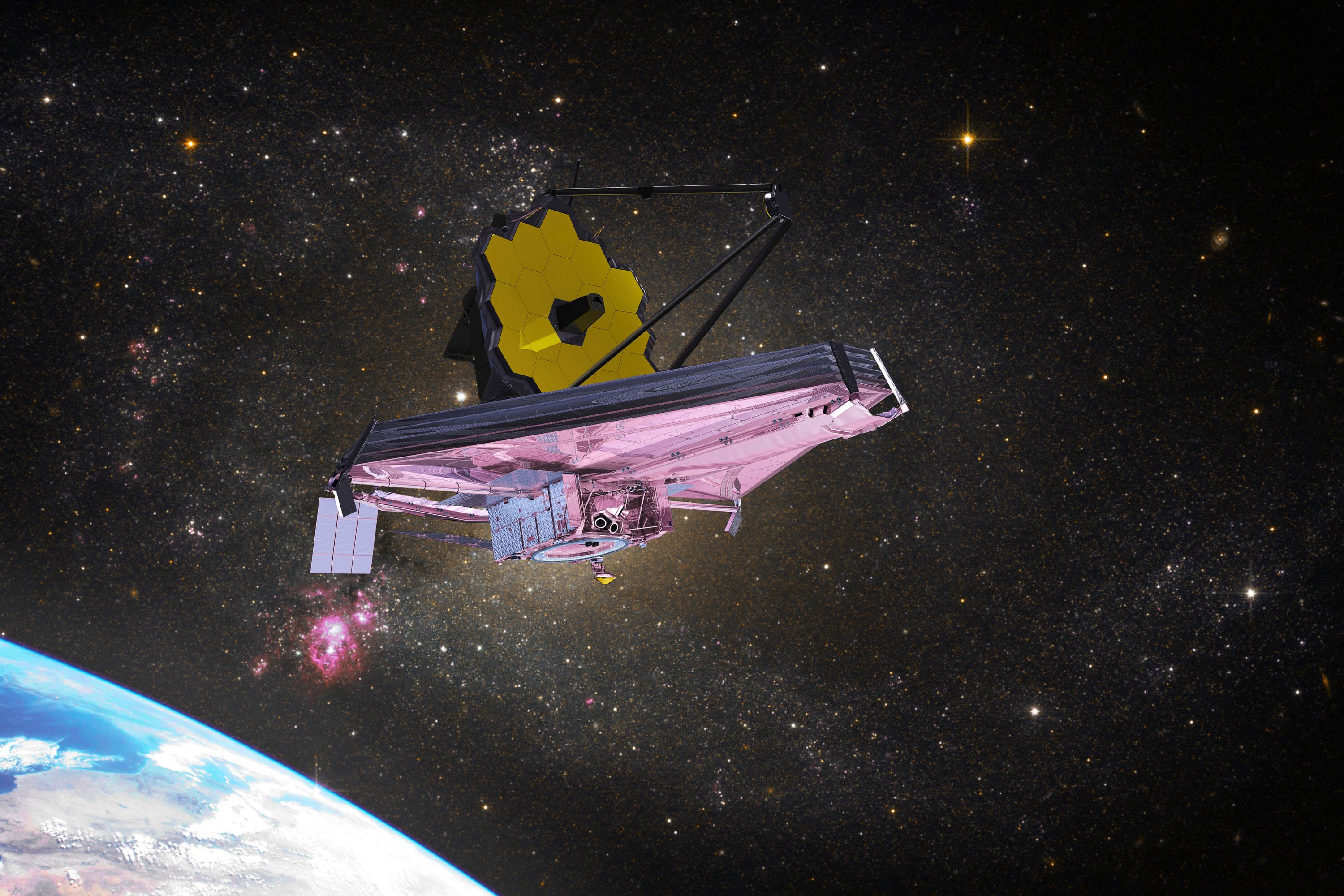With The Help Of NASA’s James Webb Space Telescope, Astronomers Discovered Black Holes May Be Why Early Galaxies Look Much Brighter And Bigger Than They Actually Were

The newborn universe appeared to possess more giant galaxies than scientists could explain—and black holes may be the reason why.
Astronomers made this discovery with the help of NASA’s James Webb Space Telescope (JWST). It was launched in 2021 and specializes in detecting infrared light.
The telescope is being used to study the early cosmos. Since the universe’s birth about 13.8 billion years ago in the Big Bang, it has expanded by a considerable amount.
That means the light from early galaxies takes on a reddish hue by the time it reaches Earth. JWST assists with capturing the light from the earliest galaxies.
When astronomers caught their first glimpses of galaxies in the early universe through the telescope, they found that some of the galaxies had quickly grown to a very large size, which was not what they had expected. Instead, they had predicted they would see smaller versions of modern galaxies.
According to Steve Finkelstein, a co-author of the study and an astrophysicist with the University of Texas at Austin, early galaxies seemed to be larger “by roughly a factor of two” than expected. Finkelstein and colleagues then discovered that some of the early galaxies were less massive than they first appeared.
The researchers studied 261 galaxies from between about 700 million and 1.5 billion years after the Big Bang. They estimated the mass of galaxies by measuring how much light a galaxy emits and calculating the number of stars it would take to produce that light.
Previously, NASA’s Hubble Space Telescope was used to help with these estimations, but it only looked at the hottest, most massive stars.
Now, the JWST can make more accurate measurements of the total amount of stars in galaxies because it observes redder wavelengths and also detects cooler, lower-mass stars.
24K-Production – stock.adobe.com – illustrative purposes only
Sign up for Chip Chick’s newsletter and get stories like this delivered to your inbox.
They determined that black holes made nine of the early galaxies look much brighter and bigger than they actually were. Gas falling into black holes can glow brightly due to friction as it rushes in at high speeds. The extra light can create the illusion that the galaxies contain more stars than they really do.
Once the researchers identified which galaxies were affected by black holes, they could account for the remaining early galaxies. However, they are still seeing more galaxies than predicted.
One reason that JWST spots about twice as many huge early galaxies than expected is that stars possibly formed at more rapid rates than they do today.
When a cloud of gas collapses, a star is born. As the gas contracts, it heats up because of friction. The opposing forces make the process of star formation really slow-going.
But since the early universe was denser than today’s universe, it may not have been as easy to release gas during star formation, so it was able to happen faster.
The study was published in The Astrophysical Journal.
Welcome to Billionaire Club Co LLC, your gateway to a brand-new social media experience! Sign up today and dive into over 10,000 fresh daily articles and videos curated just for your enjoyment. Enjoy the ad free experience, unlimited content interactions, and get that coveted blue check verification—all for just $1 a month!
Account Frozen
Your account is frozen. You can still view content but cannot interact with it.
Please go to your settings to update your account status.
Open Profile Settings